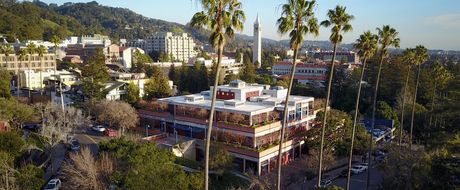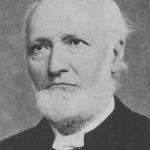
(Wikimedia Commons public domain)
One of the most enjoyable experiences of my early career was the chance to spend two months at a 1990 seminar for faculty members at the Graduate Theological Union, directly adjacent to the campus of the University of California at Berkeley, under the sponsorship of the National Endowment for the Humanities. We came, about a dozen of us, from various campuses across the country. A professor of classics, a Jesuit specialized in Buddhist studies, a “process theologian,” a couple of philosophers, etc. Devoted to the history of the concept of the so-called “Great Chain of Being,” the seminar was led by the famous comparative religionist Huston Smith (1919-2016), a remarkable man who became a friend.
Here are some related passages from his book Beyond the Post-Modern Mind, updated and revised edition (Wheaton, Madras, and London: Quest Books, 1989):
Walker Percy in his Message in the Bottle points out that we do not know who we are. There exists in the contemporary West no coherent theory of human nature, no consensus view such as prevailed in thirteenth-century Europe, in seventeenth-century New England, or in traditional societies still. Whether these views were true or false, they were viable beliefs. They animated their cultures and gave life its meaning. They were outlooks people tried to live by. . . . Not only do these views not mesh; they are in head-on opposition, for according to science we are the more who have derived from the less, whereas our religions teach that we are the less who have derived from the more. (162)
Marshall Sahlins tells us that “we are the only people who think themselves risen from savages; everyone else believes they descended from gods.” (167)
In thus contradicting each other, our two views — one taught by our schools, the other by our churches and synagogues — cancel each other out, leaving us without a clear self-image or identity. It is impossible for both views to be true, yet simply by having been born into today’s West, all of us believe parts of both of them. Even those who have abandoned the theological specifics of the religious view continue to affirm the afterglow that lingers from its light: the belief that human beings are endowed with certain unique properties — inherent dignity and inalienable rights — that other organisms do not possess, and that (as a consequence) the highest value a democratic society can set for itself is respect for the sacredness and worth of the individual. (162)
Two quick observations:
(1)
If one accepts wholeheartedly the view that “we are the more who have derived from the less,” it might be difficult to maintain what Huston Smith calls the “afterglow” of the other worldview, with its affirmation of inherent human dignity and inalienable rights. Adolf Hitler’s “social Darwinist” view of human beings as nothing more than “a ridiculous ‘cosmic bacterium’” (“eine lächerliche ‘Weltraumbakterie’”) would, I think, be fairly defensible from such a position. (See my post from yesterday, “Evolutionary Theory and Nihilism.”)
(2)
Huston Smith says that “it is impossible for both views to be true,” but I think that Latter-day Saint belief in a premortal and nonearthly origin of human spirits, quite apart from the origin of physical human bodies, might conceivably provide grounds for such a possibility.











